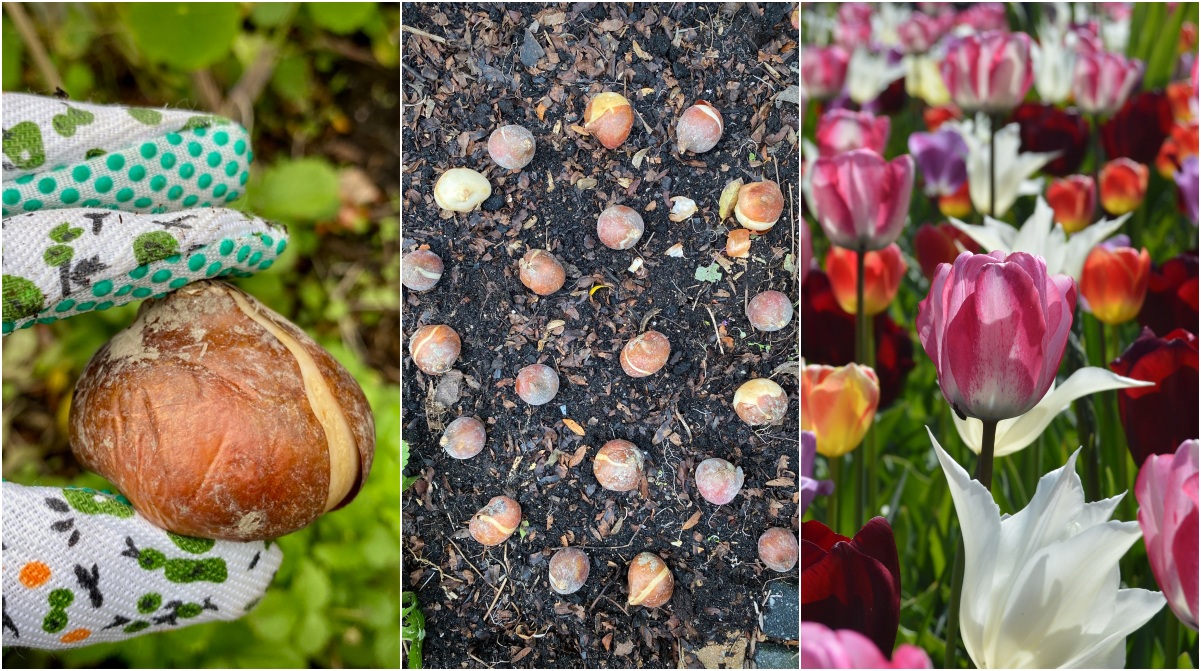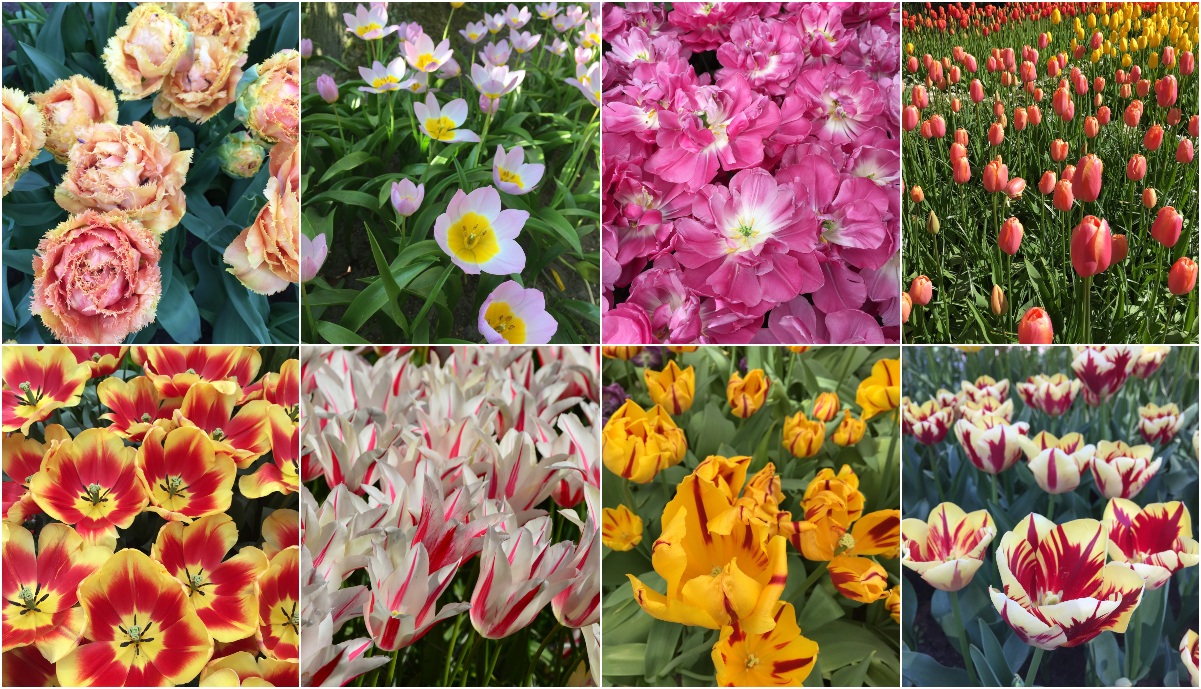
When I was growing up, my relatives and acquaintances who had a garden grew red tulips. Maybe yellow. Occasionally white. I would spend hours browsing through gardening catalogs that hardly had any other choices.
Oh, how things have changed!
With the advent of online shopping and the boom in gardening megastores over the past decade, there are so many more tulip varieties widely available and affordable for amateur gardeners. This is only a small part of the display at my local garden center, and I didn’t even go to the largest one.
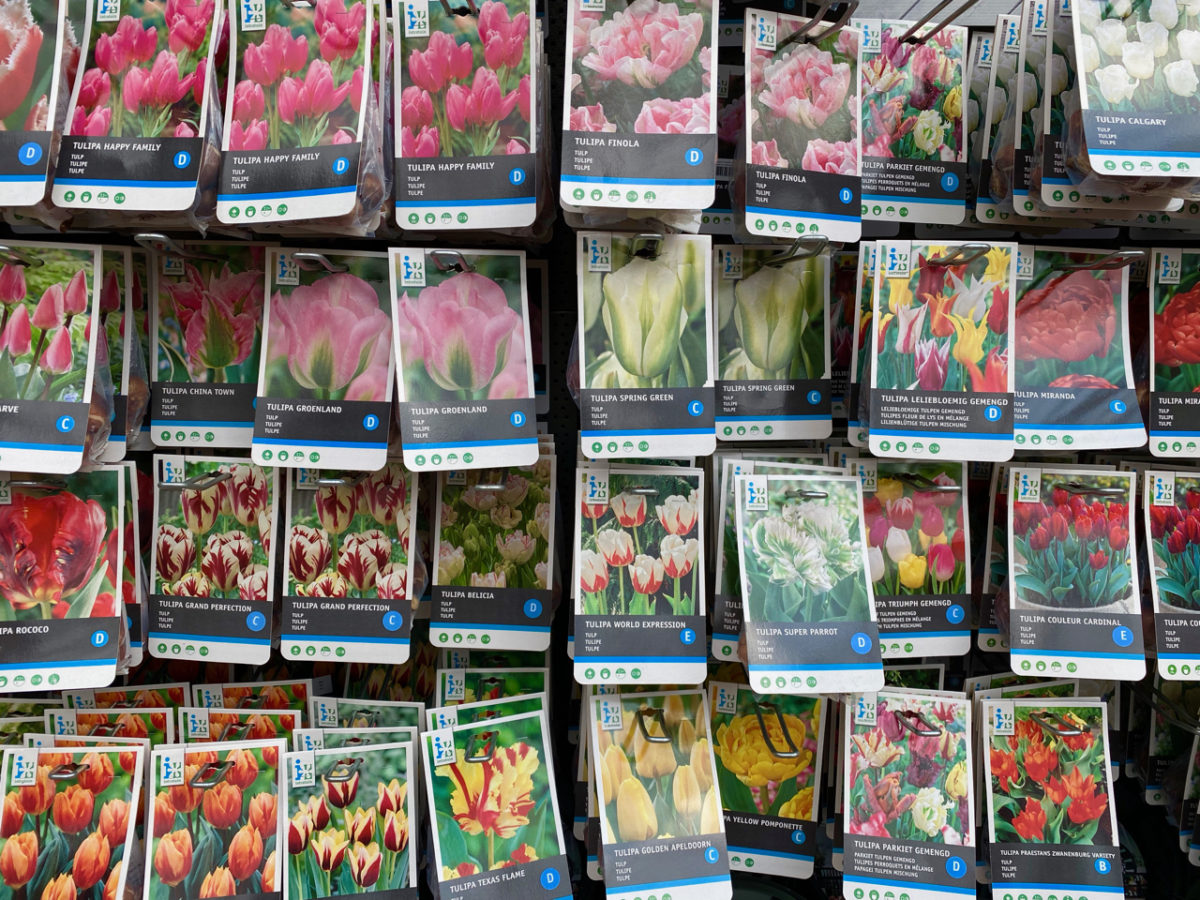
If you’re overwhelmed by choosing the right tulip for your garden, just know that you’re not alone.
There are 15 tulip groups (categories), according to the information I got on my visits to Keukenhof Tulip Garden, the largest display tulip garden in the world (think of it as a real-life gardening catalog for wholesalers rather than just a tourist attraction).
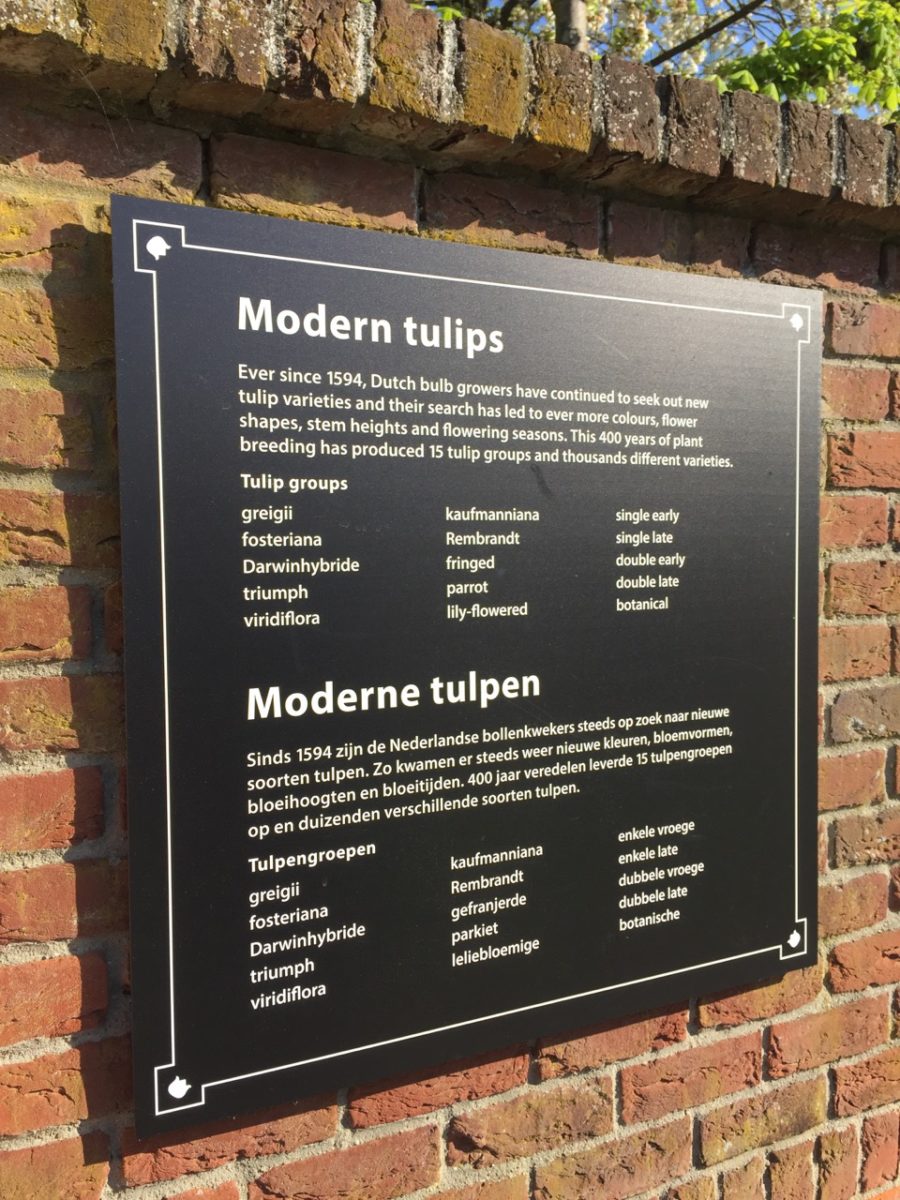
So I’ll use their breakdown to briefly describe the different types of tulips you can buy. I’ll keep it brief, but you can always ask questions on our Facebook page.
Here are the fifteen tulip groups in the order described by the professional growers at Keukenhof.
1. Greigii tulips

- Were first introduced into cultivation in the 1870s;
- Have large bright blooms with a double-petal pattern; usually three inner petals supported by three outer petals;
- The foliage has a marble-like variegation, often in shades of brown, purple and maroon;
- Flower on a short stem about 8-12 inches in height (20-30 cm);
- Bloom in early spring;
- Are good rebloomers and can perennialize well;
- Can be left in the ground after they bloom.
- Popular cultivars include: ‘Cape Cod’, ‘Rob Verlinden’, ‘Toronto’, ‘Quebec’, ‘Calypso’, ‘Fire of Love’.
2. Fosteriana tulips
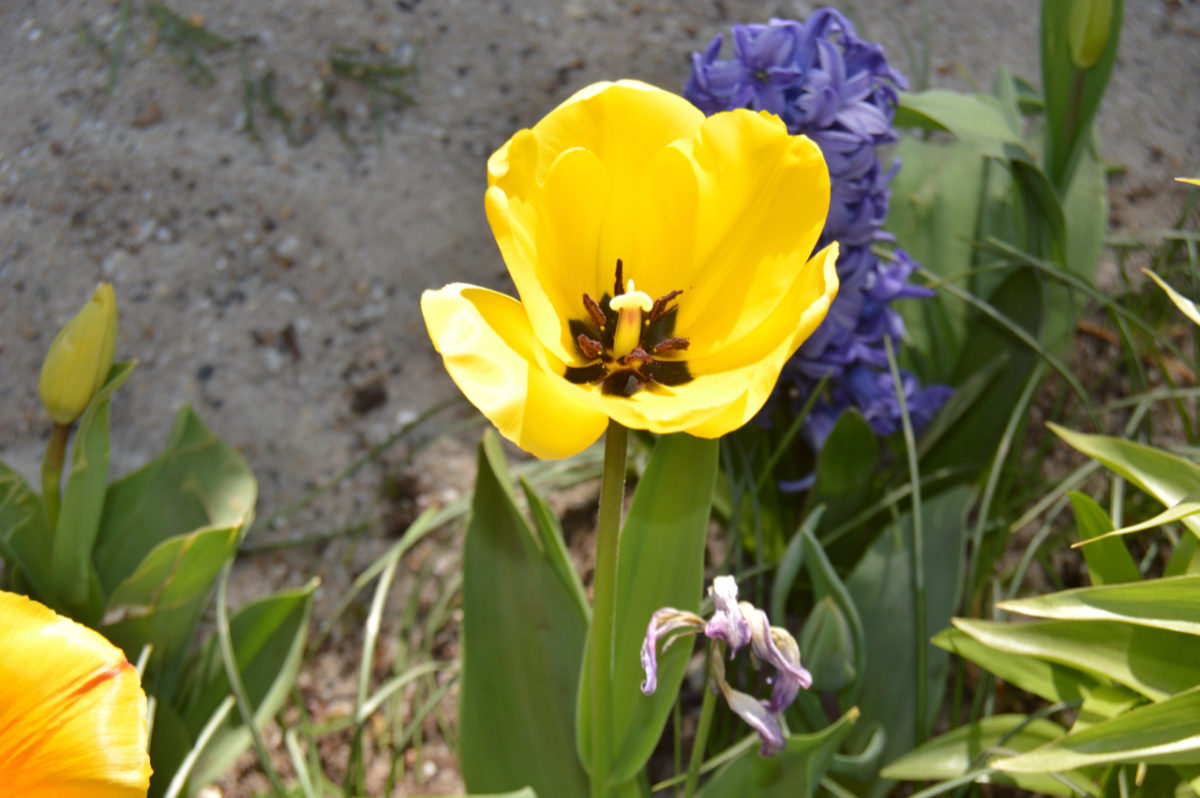
- Were first introduced into cultivation in the early 1900s;
- Originate from a wild species of tulips that can still be found in Central Asia;
- Were themselves used as the main source of Darwin Hybrid tulips (more on this group later);
- Have large glossy blooms, most often in shades of red, orange and white;
- Generally have a black “eye” in the center of the petals;
- Mid-sized stems can reach about 18-22 inches in height (45-55 cm);
- The foliage is broad and sometimes glossy;
- They bloom early in the season;
- Can be left in the ground after the blooming period is over;
- Can perennialize well;
- Popular cultivars include: ‘Sweetheart’, ‘Purissima’, ‘Apricot Emperor’, ‘Red Emperor’, ‘Orange Emperor’, ‘Yellow Emperor’.
3. Darwin Hybrid tulips
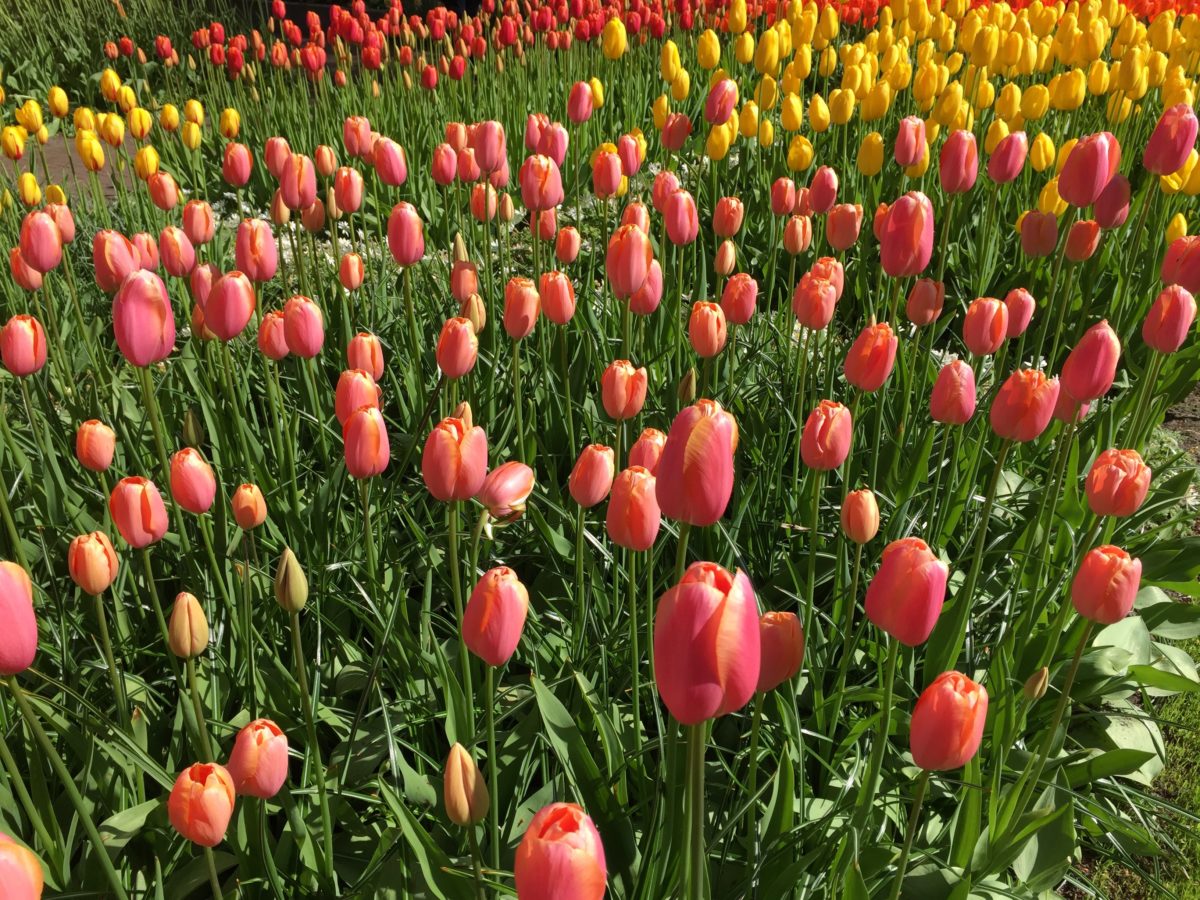
- Are a result of crossing old Darwin tulips with Fosteriana tulips;
- Have large blooms with wide petals that open flat in the sun;
- Flower on tall stems of about 22 inches (55 cm);
- The stems are very sturdy, so the Darwin Hybrid tulips can be planted in borders;
- Bloom in mid-spring;
- Make excellent long-lasting cut flowers;
- One bulb can bloom for up to five years, so they can be left in the ground in the off-season;
- Will naturalize well;
- Popular cultivars include: ‘Apricot Delight’, ‘Akebono’, ‘Red Impression’, ‘Pink Impression’, ‘Apeldoorn’, ‘World’s Favourite’, ‘Big Chief’, ‘Daydream’, ‘Capri’, ‘Tequila Sunrise’.
4. Triumph tulips
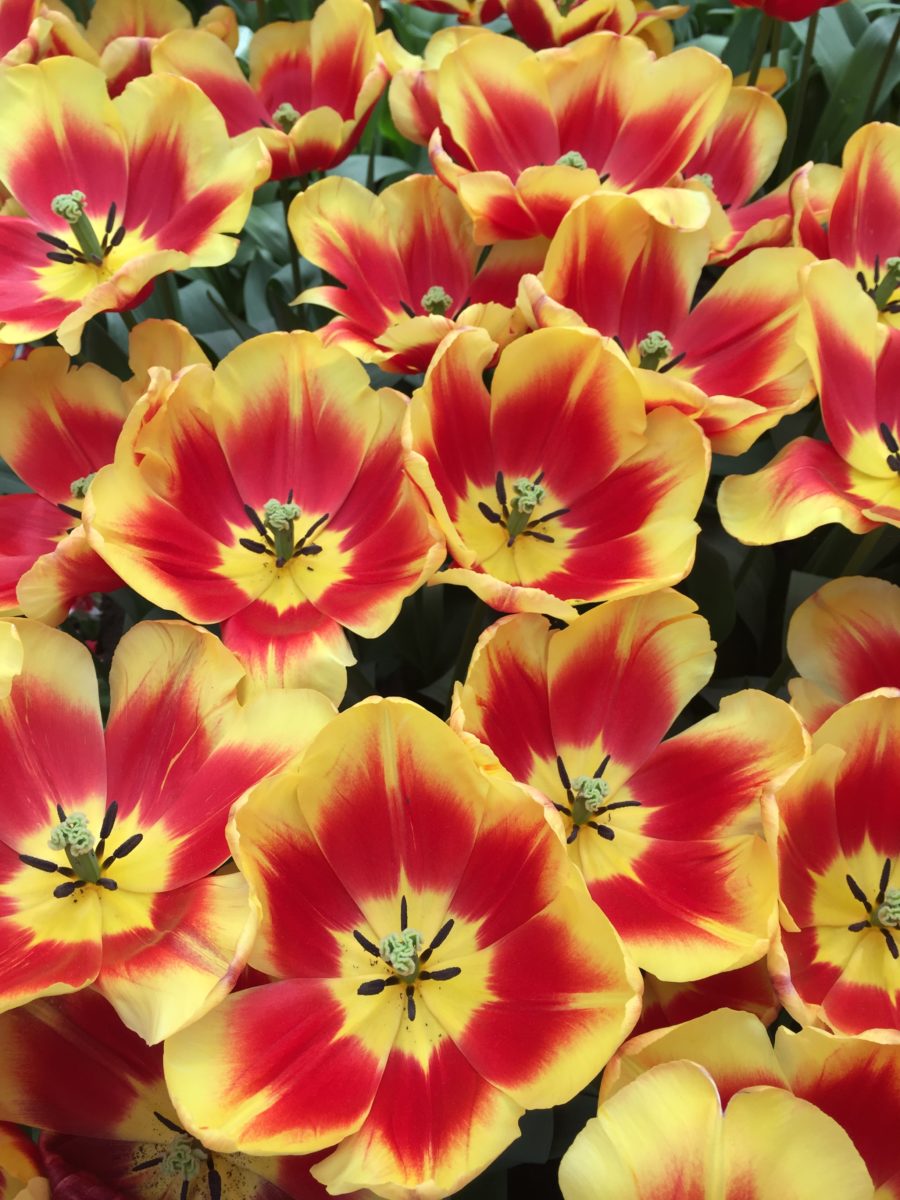
- Are the largest group of tulips with the highest number of cultivars;
- Are the result of a cross between Single Early tulips and Darwin group tulips;
- Have a traditionally-shaped mid-sized tulip bloom;
- The stem varies in height, but it’s generally around 14-20 inches (35-50 cm);
- They bloom in mid-spring;
- They last a long time as cut flowers, so they’re perfect for bouquets and arrangements;
- Some Triumph tulips have a subtle fragrance;
- They’re easy to grow, but don’t always naturalize well;
- Popular cultivars include: ‘Timeless’, ‘Tropical Dream’, ‘Shirley’, Denmark’, ‘Princess Irene’, ‘Coleur Cardinal’, ‘Ile de France’, ‘Mango Charm’, ‘Purple Rain’, ‘Suncatcher’.
5. Viridiflora tulips
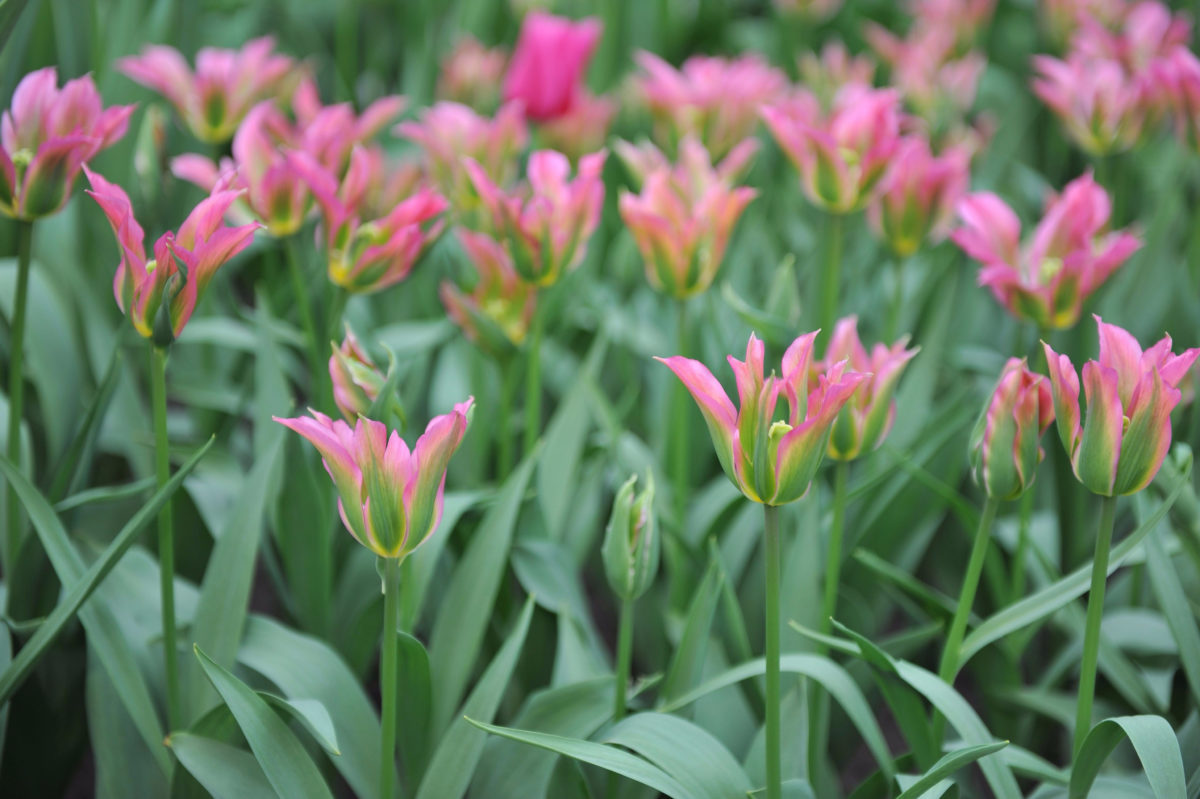
- Are currently a small group of tulips;
- Have green markings on the back of the petals that look like flames reaching up from the base to the tip of the petal;
- The stem varies in height between 16-20 inches (40-50 cm);
- Bloom in mid-spring to late spring.
- They’re easy to grow, but don’t naturalize well;
- Popular cultivars include: ‘Spring Green’, ‘Doll’s Minuet’, ‘Artist’, ‘Hollywood Star’, ‘Formosa’, ‘Esperanto’, ‘Green River’.
6. Kaufmanniana tulips (Waterlily tulips)
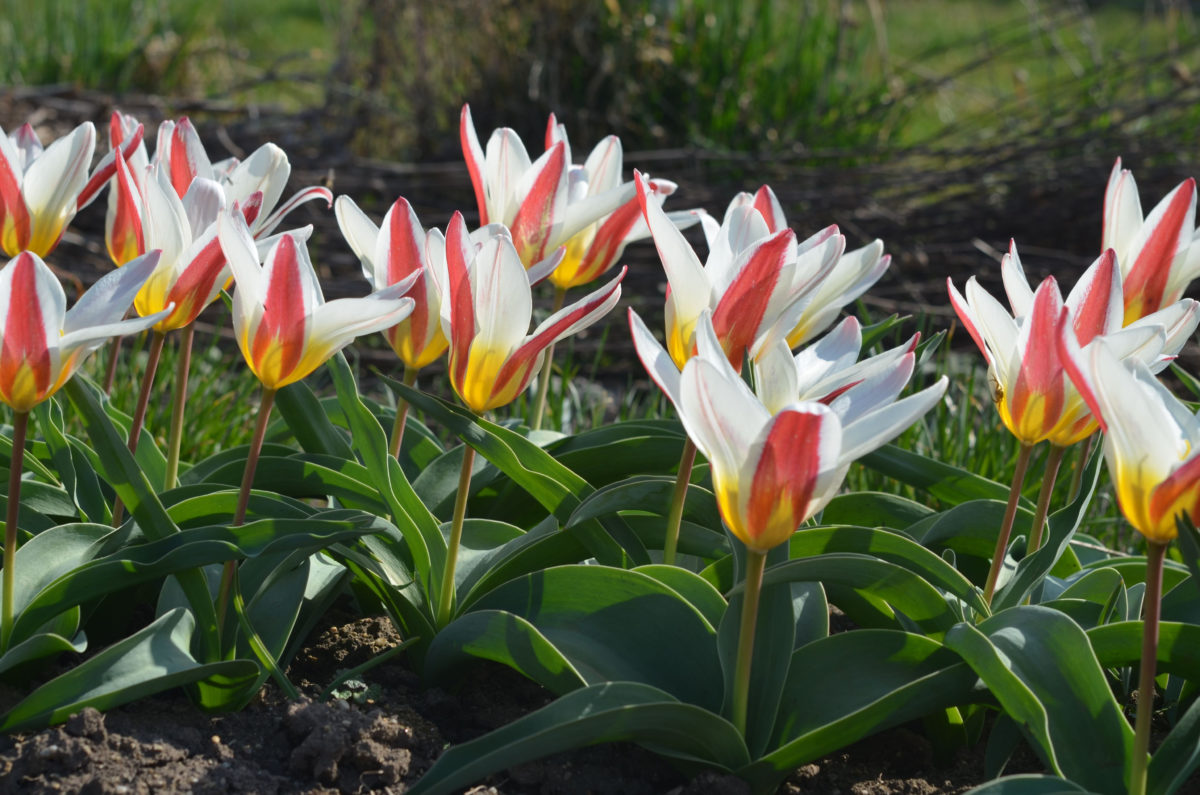
- Were introduced into cultivation in the 1870s;
- Their upright petals open into a star-shaped bloom;
- The flowers often have a yellow “eye” inside the bloom;
- Have a short stem of about 8010 inches (20-25cm);
- Are one of the first tulip groups to flower in early spring;
- Can be forced to bloom indoors in late winter;
- Popular cultivars include: ‘Showinner’, ‘Early Harvest’, ‘Giuseppe Verdi’, ‘Stresa’, ‘Heart’s Delight’, ‘Ancilla’, ‘Scarlet Baby’.
7. Rembrandt Tulips
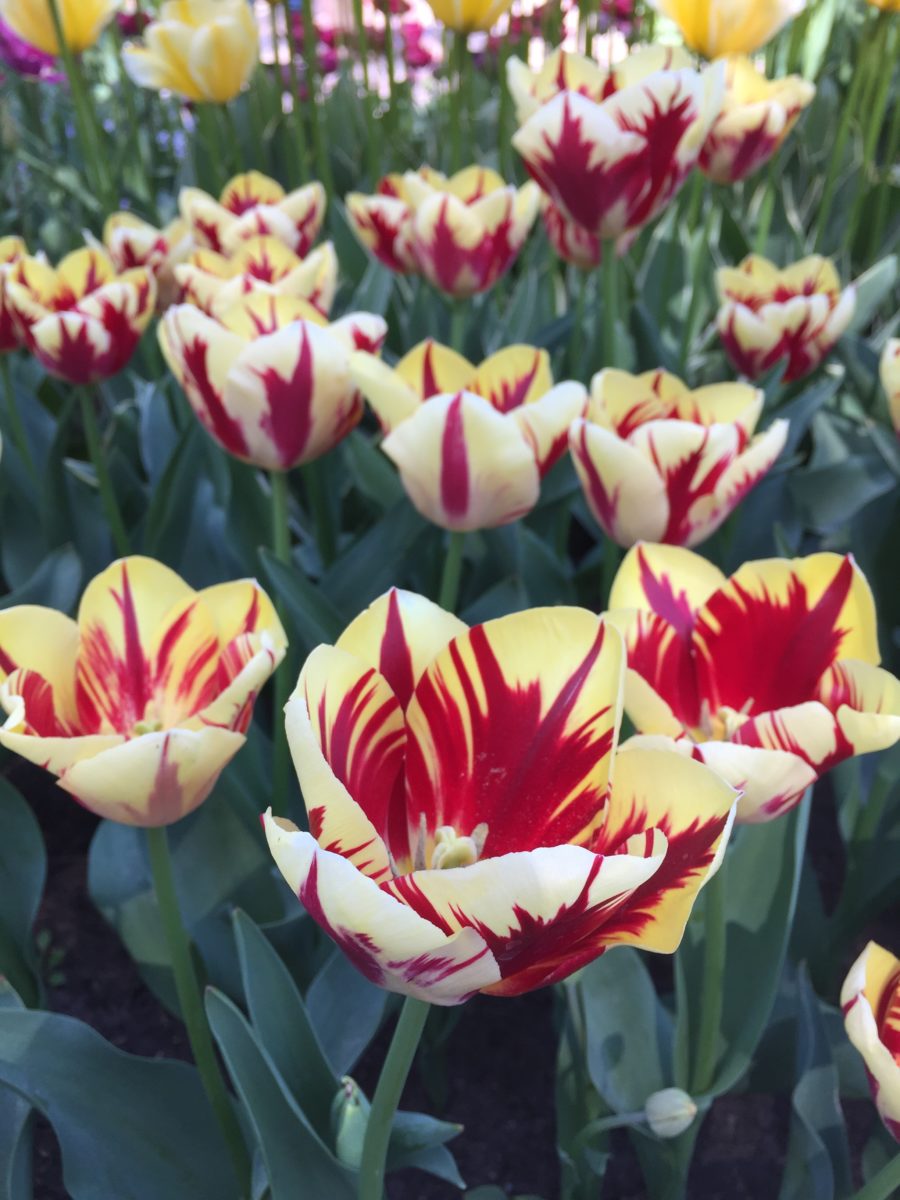
- It’s a common misconception that this type of tulips are a subject of Rembrandt’s paintings. The connection with the Dutch painter stems from their common origin – Leiden, a city that’s both the birthplace of Rembrandt and that center of tulip production in the Netherlands.
- These tulips have been bred to resemble those that were traded during the Dutch Tulip Mania of the seventeenth century.
- But while the novelty of the streaks and patterns during the bubble was caused by the Tulip Breaking Virus (TBV) spread by aphids, the tulips sold nowadays are not virus infected. They’re stable and purposely bred this way.
- The blooms have color streaks that resemble feathers, flames and splashes of color along the petals. So generally if a tulip cultivar has the word “flame” in its name, it’s probably part of the Rembrandt group.
- The stems vary in height between 18 and 24 inches (45-60 cm);
- They bloom late in the season, usually in May;
- Cannot withstand strong winds, so they should be planted in a sheltered location;
- Popular cultivars include: ‘Flaming Memory’, ‘Flaming Baltic’, ‘Olympic Flame’, ‘Grand Perfection’.
8. Fringed tulips (Crispa tulips)
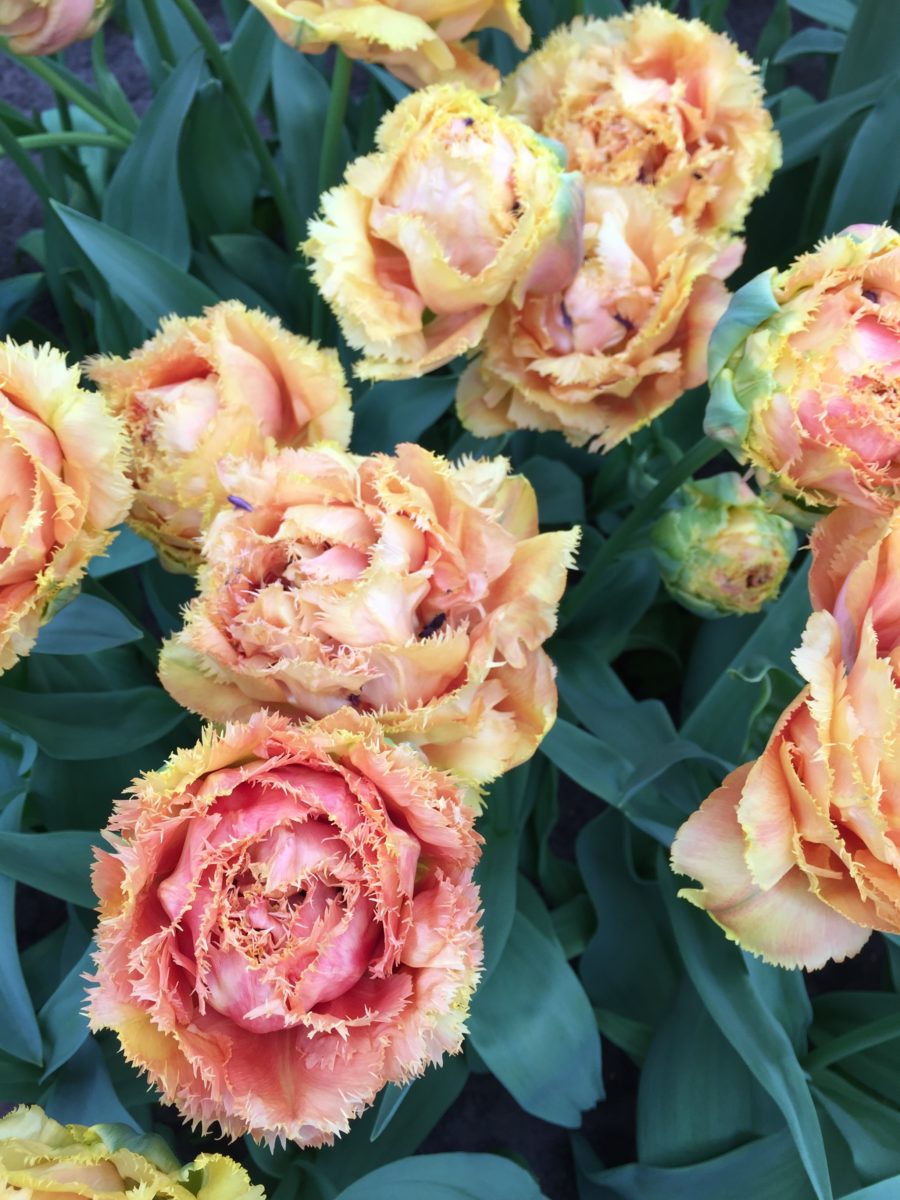
- This is a newly formed group made up of mutations from other groups, so this may influence variations in height and blooming time significantly.
- The edges of the petals are fringed and frilly; the edges are usually a lighter color than the rest of the bloom;
- The stem varies in height between 14 and 30 inches (35-75 cm);
- Bloom in mid-spring to late spring;
- They can perennialize well;
- They’re long-lasting cut flowers;
- Popular cultivars include: ‘Cummins’, ‘Neglige’, ‘Cuban Night,’ ‘Louvre’, ‘Honeymoon’, ‘Arma’, ‘Curly Sue’, ‘Sensual Touch’, ‘Hamilton’, ‘Burgundy Lace’.
9. Parrot tulips
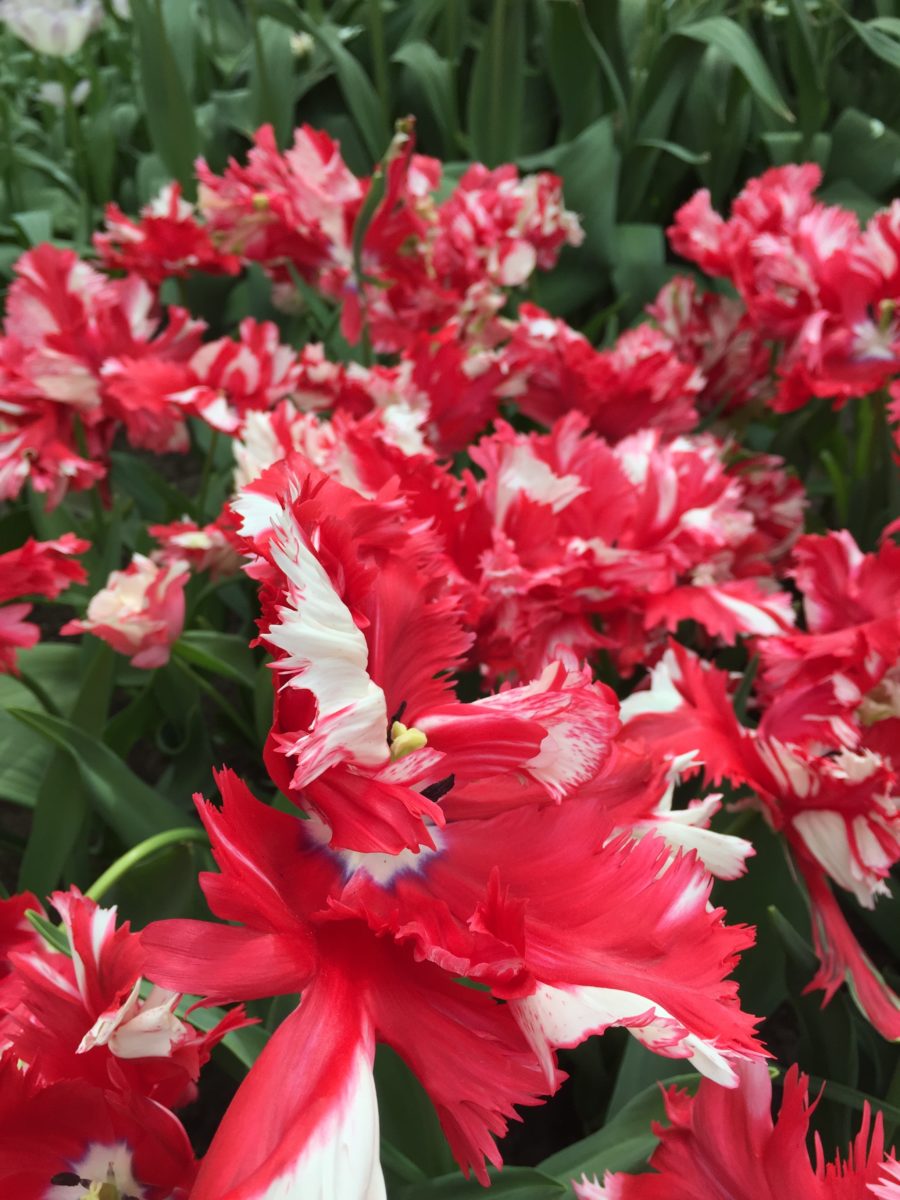
- The first parrot tulip mutations were recorded as early as the seventeenth century in France;
- The petals have swirls around the edges that resemble the plumage of exotic birds;
- The blooms are large and open widely;
- Sometimes the petals may have streaks of green and yellow on a darker background;
- The stems vary in height between 14 and 24 inches (35-60 cm);
- They bloom in late spring, usually around May;
- Popular cultivars include: ‘Rococo’, ‘Green Wave’, ‘Apricot Parrot’, ‘Black Parrot’, ‘Blue Parrot’, ‘Texas Flame’.
10. Lily-flowered tulips
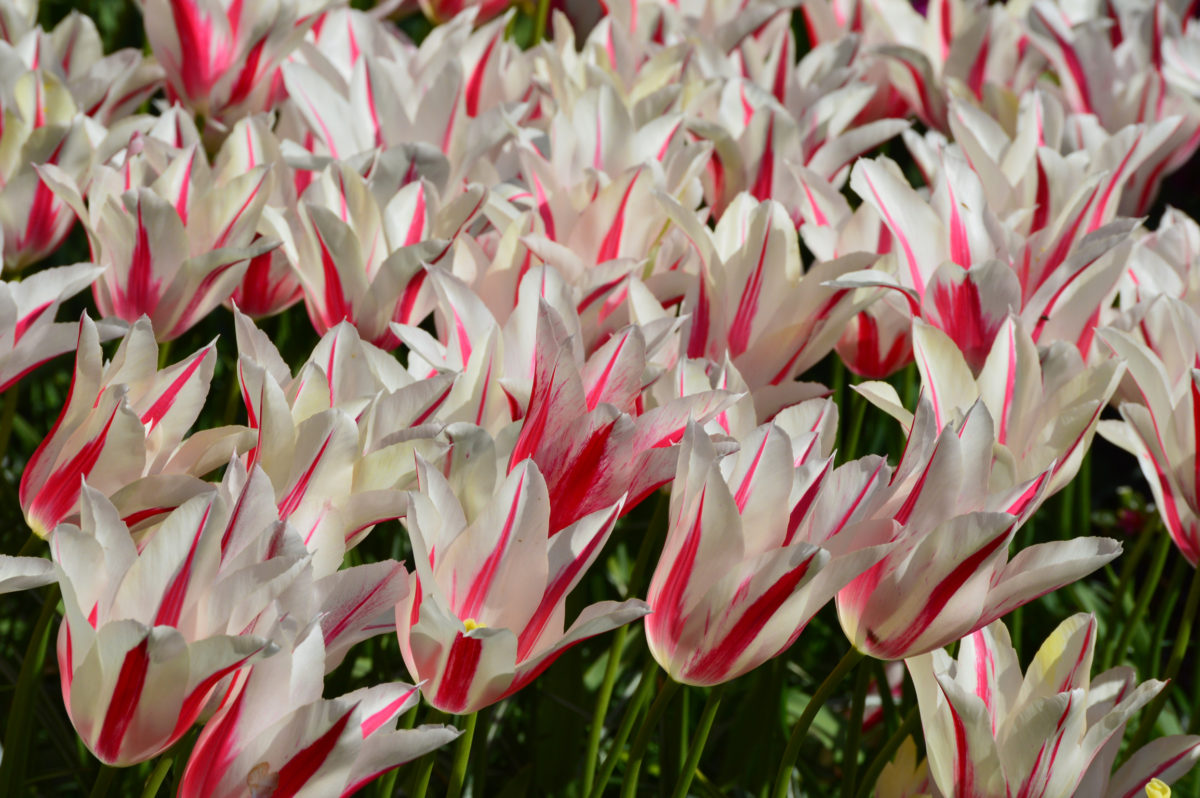
- Have slender pointed blooms with hourglass-like petals;
- The elongated narrow pointed petals resemble those of lilies;
- Have mid-sized or tall stems between 10 and 24 inches (25-60 cm);
- The stems are thin and fragile, so tulips in this group should be planted in sheltered locations, along walls or behind a windbreak;
- They bloom in mid-spring and late spring;
- Popular cultivars include: ‘Flower Wings’, ‘Mona Lisa’, ‘Pieter de Leur’, ‘Fly Away’, ‘Red Shine’, ‘Burgundy’, ‘Merlot’, ‘Ballade’, ‘Ballerina’, ‘Marylin’, ‘Mariette’.
11. Single early tulips
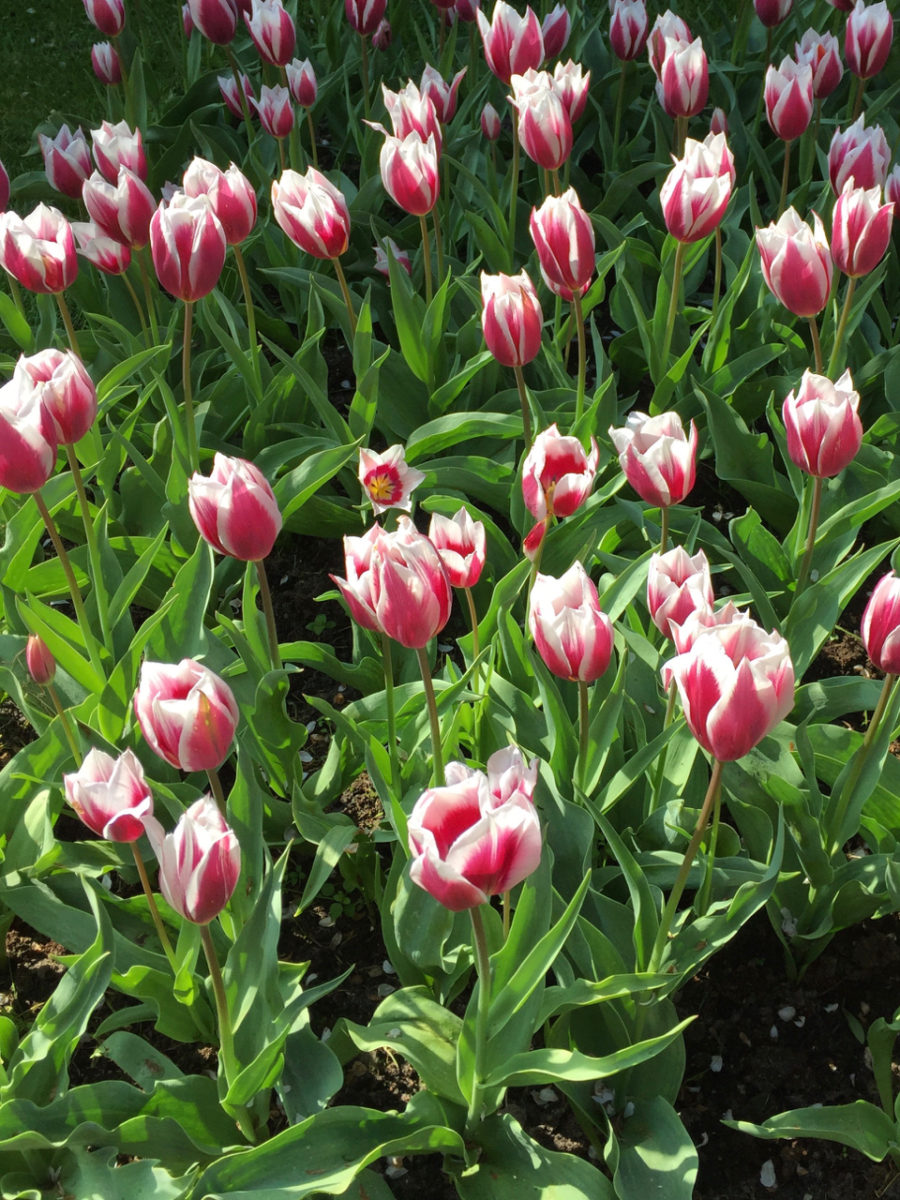
- Despite their name, they’re not the earliest tulips to flower;
- They bloom in early spring, but after Fosteriana and Kaufmanniana;
- Have mid-sized cup-shaped single blooms that open wide in full sun;
- Have a short to mid-sized stem that varies between 10 and 18 inches (25-45 cm);
- The stem is quite strong and flexible and can withstand wind and rain;
- They are suitable for bulb forcing indoors in late winter;
- Some cultivars in this group have a sweet floral fragrance;
- They make excellent container plants;
- Popular cultivars include: ‘Christmas Marvel’, ‘Christmas Dream’, ‘Flair’, ‘Apricot Beauty’, ‘Candy Prince’, ‘Purple Prince’, ‘Salmon Prince’, ‘Apricot Delight’.
12. Single late tulips (May tulips)
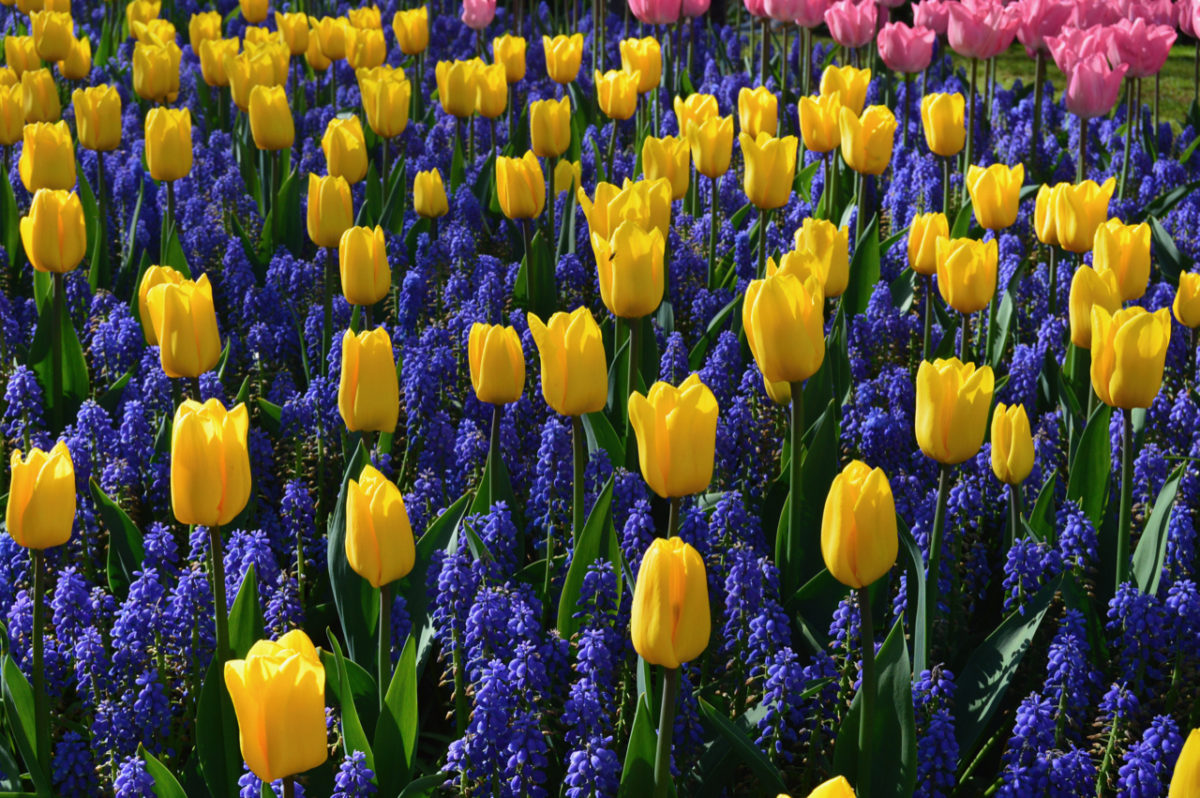
- The blooms have goblet-like shapes in a variety of colors and hues;
- They have tall strong stems that vary in height between 22 and 30 inches (55-75 cm);
- They bloom late in the season, usually in May;
- They’re ideal for flower arrangements and can last for a week or more after cutting;
- Popular cultivars include: ‘Dordogne’, ‘Avignon’, ‘Menton’, ‘Maureen’, ‘Andre Rieu’, ‘Queen of Night’, ‘Big Smile’, ‘Blushing Beauty’, ‘Atlantis’, ‘Antoinette’, ‘Pink Diamond’.
13. Double early tulips
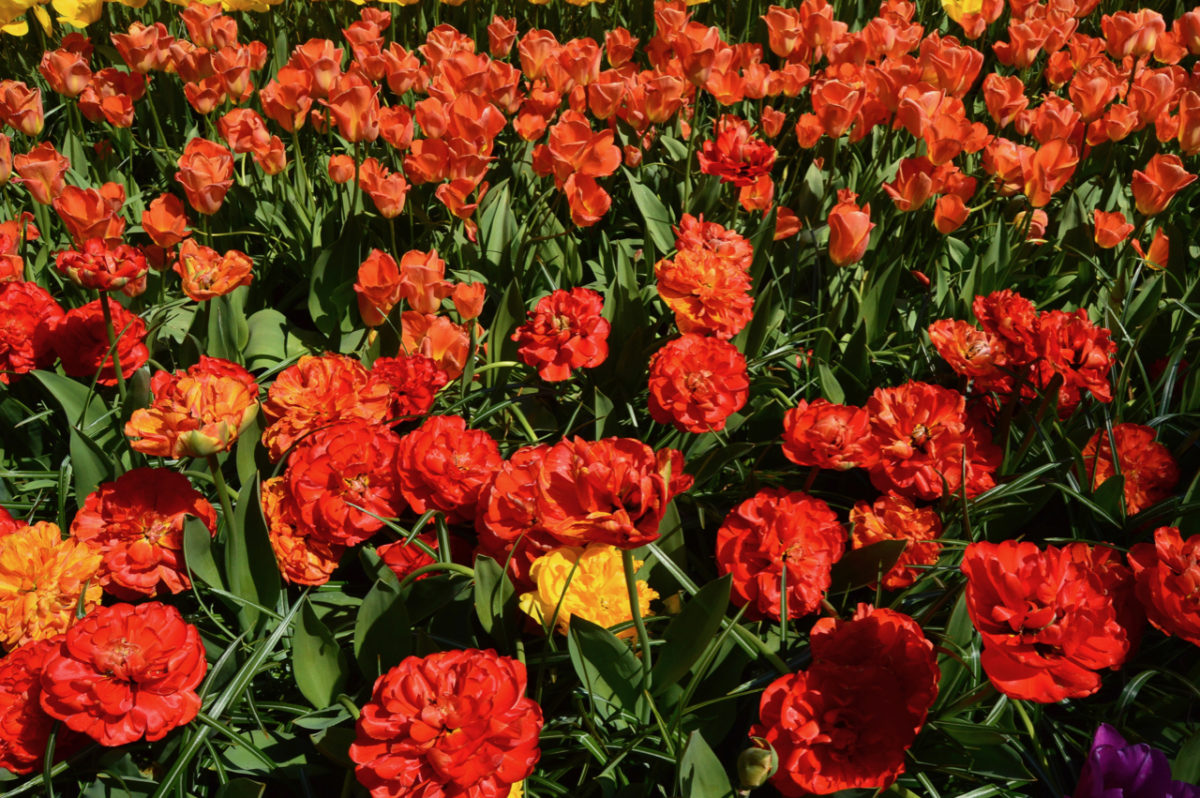
- The blooms have two or more rows of petals, often in concentric circles;
- The petals often form frilly clusters, resembling parrot tulips;
- The stems can reach up to 18 inches tall (45 cm);
- They bloom in early spring and mid-spring;
- They are long-lasting as cut flowers and keep very well in arrangements and bouquets;
- Popular cultivars include: ‘Monsella’, ‘Miranda’, ‘Verona’, ‘Murillo’, ‘Montreux’, ‘Foxtrot’, ‘Abba’, ‘Queen of Marvel’, ‘Monte Carlo’.
14. Double late tulips (Peony tulips)
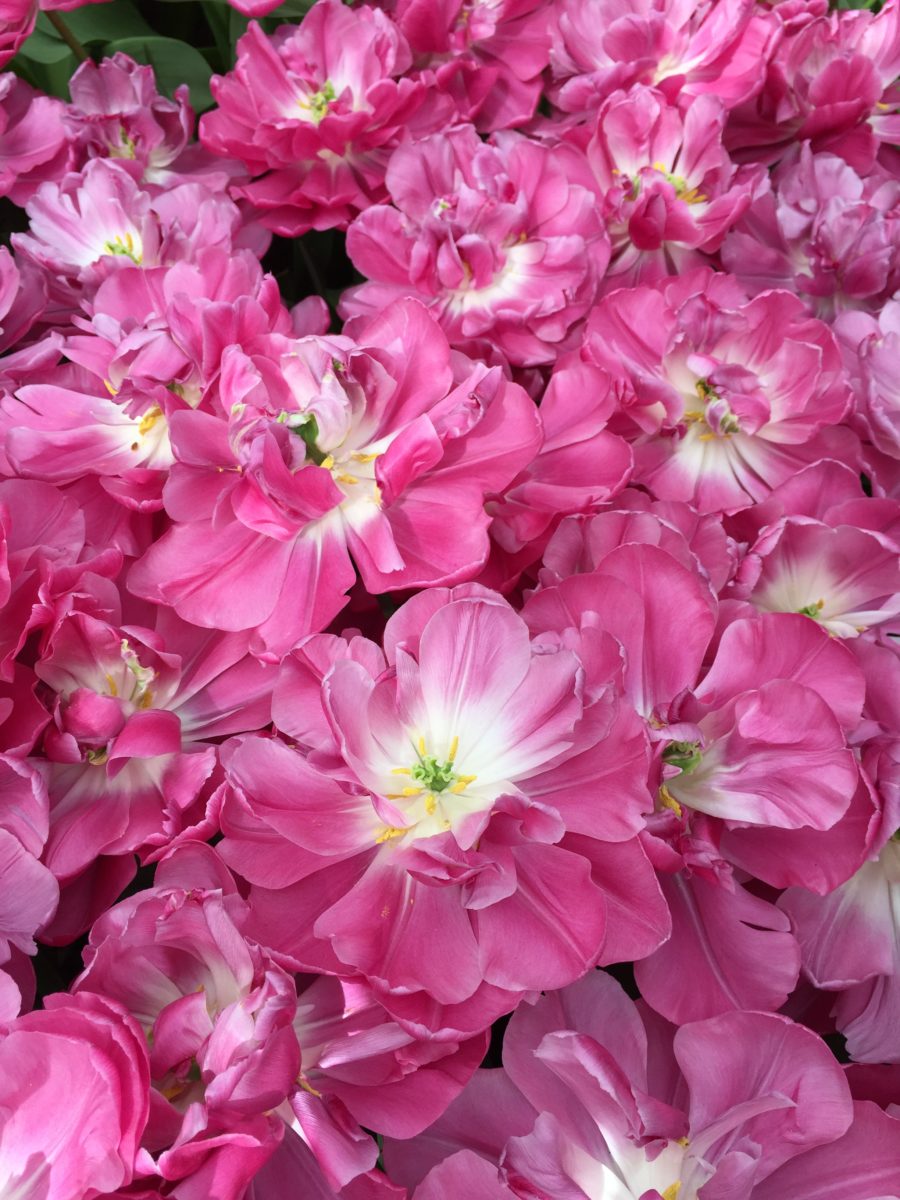
- Have rich petal clusters that form large blooms, making them the largest tulips;
- The stem is usually taller than the Double Early tulips, and can reach 24 inches (60 cm);
- The blooms open up in late spring;
- They usually have a sweet fragrance;
- They should be planted in a sheltered location or behind a wind break;
- Popular cultivars include: ‘Chatto’, ‘Late Princess’, ‘Orange Princess’, ‘Creme Upstar’, ‘Candy Time’, ‘Miranda’, ‘Casablanca’, ‘Purple Jacket’.
15. Botanical tulips (Species tulips)
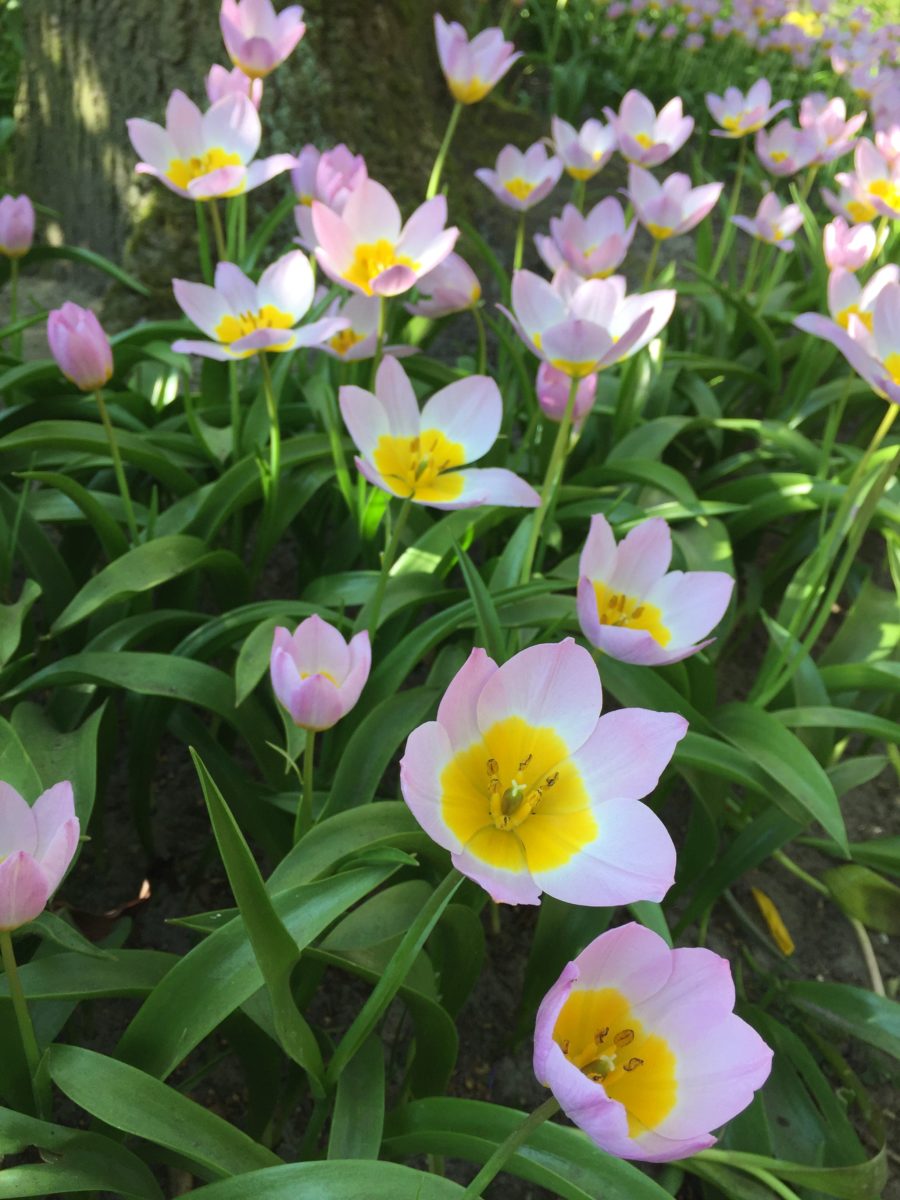
- They are the ancestors of most tulip groups;
- Both the blooms and the stems make them look like delicate miniature tulips;
- They’re perennial bulbs that have adapted evolutionarily and naturalize very well;
- They’re hardier and easier to grow than all the other hybrids;
- They’re excellent for container growing and can be left in the container year round;
- Popular cultivars include: ‘Lilac Wonder’, ‘Eastern Star’, ‘Lady Jane’.
The TLDR of Tulip Bloom Time
Just in case you were left a bit dazzled by this guide, here’s the too-long-didn’t-read (TLDR) version of the tulip bloom timing:
Early blooming tulips
Fosteriana
Greigii
Kaufmanniana
Single early
Double early
Mid-season blooming tulips
Darwin Hybrid
Triumph
Fringed
Lily-flowered
Viridiflora
Late blooming tulips
Parrot
Single late
Double late
And here’s a handy cheat sheet that you can save on your phone and take with you next time you go bulb shopping.
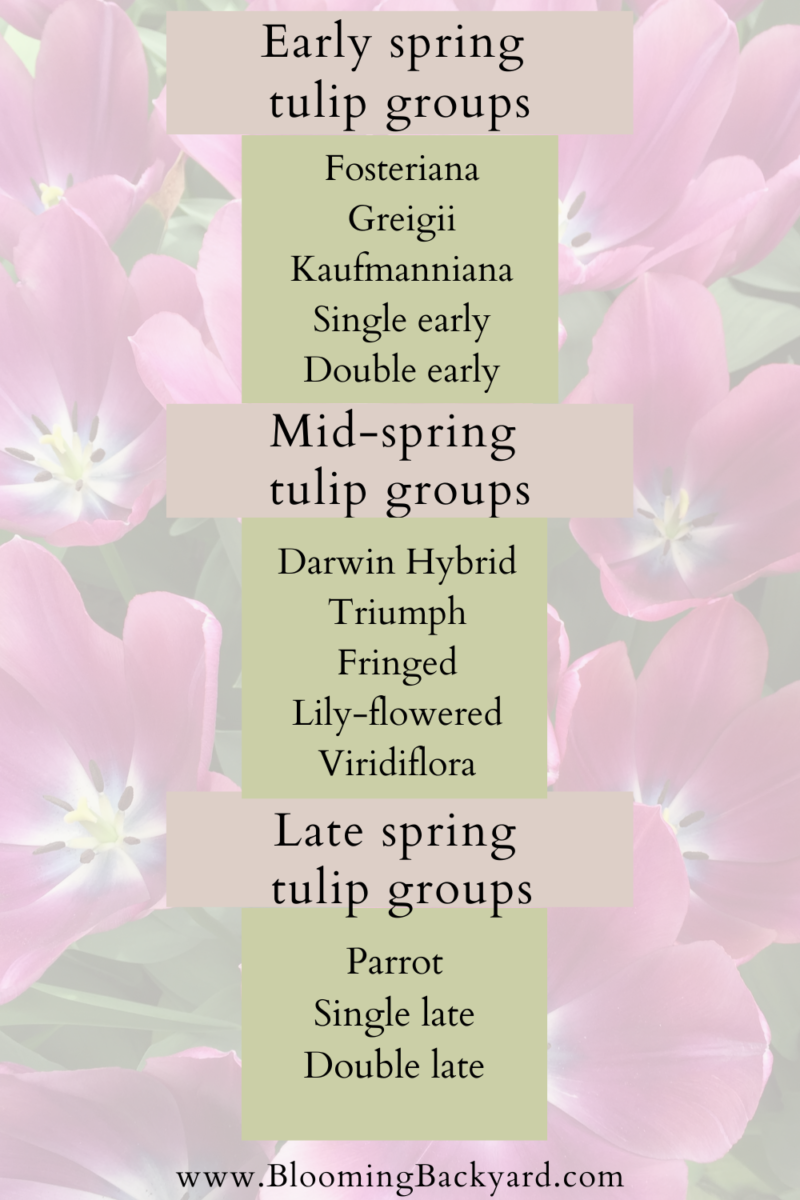
How and when to plant tulip bulbs
No matter what type of tulip or which type of tulip cultivar you’d like to plant in your backyard, the how and when is the same.
Take a look at our total guide to planting tulip bulbs below:

